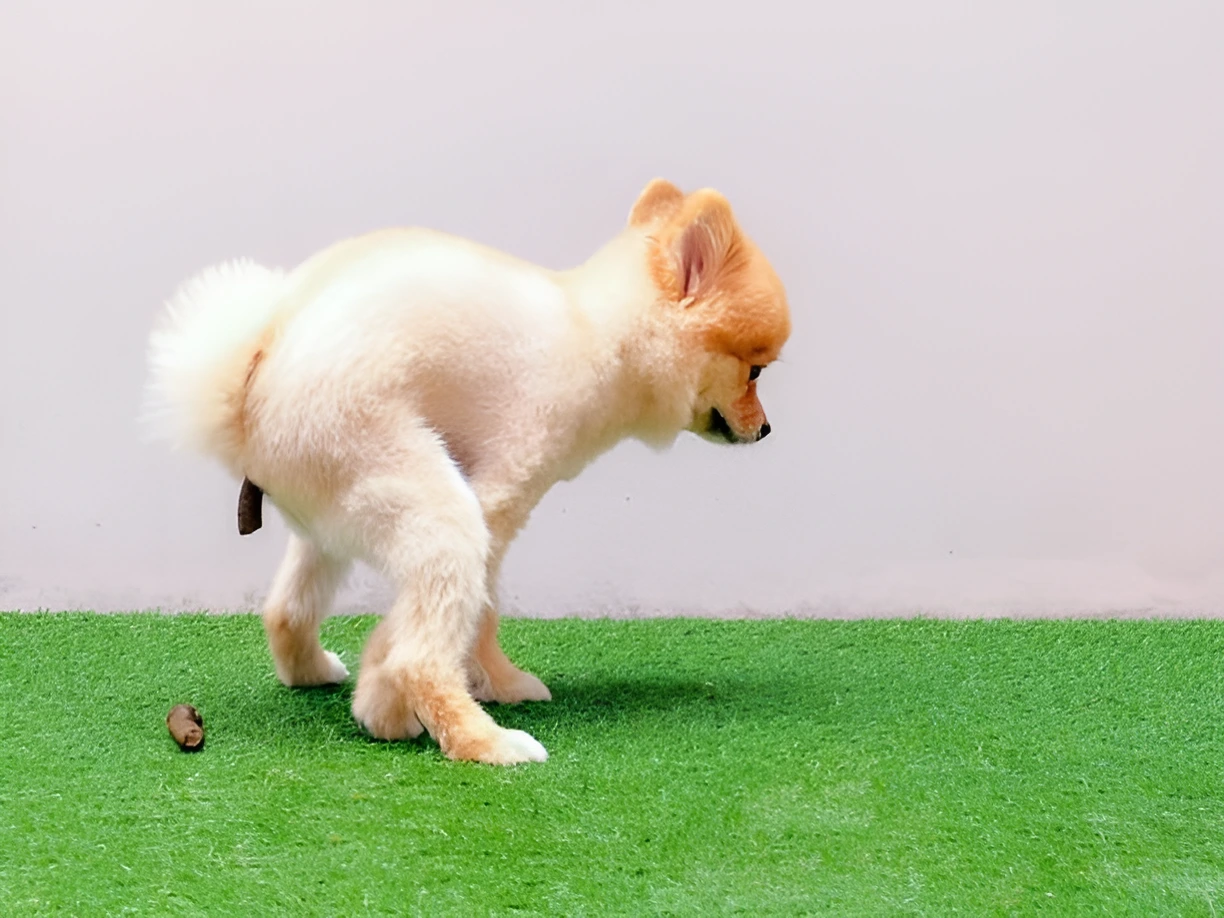Small dogs can typically hold their pee for 4-6 hours and their poop for 8-10 hours. Understanding these limits is crucial for their health and well-being. Owning a small dog comes with its unique set of joys and challenges. One of the most common concerns among pet owners is understanding how long their furry friends can hold their pee and poop. This comprehensive guide will delve into the factors that influence these durations, provide practical tips for managing bathroom breaks, and offer insights into maintaining your dog’s health and happiness.
Factors Influencing Bathroom Break Durations
Several factors determine how long a small dog can hold its pee and poop:
- Age: Puppies and senior dogs have different needs compared to adult dogs.
- Health: Conditions like diabetes or urinary tract infections can affect bladder control.
- Diet and Hydration: What and how much your dog eats and drinks plays a significant role.
- Activity Level: More active dogs may need more frequent breaks.
- Training: Well-trained dogs can hold it longer than those still learning.
Age and Bathroom Breaks
Puppies: Young puppies (2-5 months) need to pee every 2 hours. As they grow, they can hold it for about one hour per month of age. For example, a 6-month-old puppy can hold it for about 6 hours.
Adult Dogs: Healthy adult dogs can typically hold their pee for 6-8 hours during the day and up to 11 hours overnight. However, it’s best to aim for more frequent breaks to avoid discomfort and potential health issues.
Senior Dogs: Older dogs may need more frequent breaks due to decreased bladder control.
Health Considerations
Certain health conditions can impact your dog’s ability to hold their pee and poop:
- Urinary Tract Infections (UTIs): Can cause frequent urination.
- Diabetes: Increases thirst and urination.
- Kidney Disease: Affects urine production and frequency.
- Cushing’s Disease: Leads to increased drinking and urination.
Regular vet check-ups are essential to monitor and manage these conditions effectively.
Diet and Hydration
A balanced diet and proper hydration are crucial for your dog’s health. Ensure your dog has access to fresh water throughout the day, but monitor their intake to prevent excessive drinking, which can lead to more frequent bathroom breaks.
Diet Tips:
- High-Quality Food: Choose a high-quality dog food that meets all nutritional needs.
- Regular Feeding Schedule: Stick to a regular feeding schedule to help regulate bathroom breaks.
- Avoid Human Food: Human food can upset your dog’s stomach and lead to more frequent bathroom needs.
Training and Routine
Establishing a consistent bathroom routine is key to managing your dog’s needs. Here are some tips:
- Regular Breaks: Take your dog out at regular intervals, especially after meals and naps.
- Positive Reinforcement: Reward your dog for going outside to reinforce good behavior.
- Indoor Solutions: Use pee pads or indoor dog potties if you can’t take your dog out frequently.
Training Tips:
- Crate Training: Use a crate to help your dog learn to hold their pee, but don’t leave them crated for too long.
- Command Training: Teach your dog commands like “go potty” to encourage them to relieve themselves on cue.
- Consistency: Be consistent with your training methods to avoid confusion.
Practical Tips for Managing Bathroom Breaks
- Set a Schedule: Consistency helps your dog understand when to expect bathroom breaks.
- Use Commands: Teach your dog commands like “go potty” to encourage them to relieve themselves on cue.
- Monitor Behavior: Watch for signs that your dog needs to go, such as sniffing or circling.
- Crate Training: Use a crate to help your dog learn to hold their pee, but don’t leave them crated for too long.
Understanding Your Dog’s Signals
Recognizing when your dog needs to go out is crucial. Common signs include:
- Restlessness: Pacing or whining can indicate they need to go.
- Sniffing Around: Dogs often sniff the ground when they are looking for a spot to relieve themselves.
- Circling: This behavior is a clear sign that your dog is preparing to go.
The Importance of Regular Vet Visits
Regular veterinary check-ups are essential to ensure your dog’s urinary and digestive health. Vets can provide guidance on diet, hydration, and any medical conditions that might affect your dog’s bathroom habits.
Indoor vs. Outdoor Bathroom Solutions
Depending on your living situation, you might need to consider indoor bathroom solutions for your small dog. Here are some options:
- Pee Pads: These are absorbent pads that can be placed indoors for your dog to use.
- Indoor Dog Potties: These are designed to mimic grass and can be a good alternative for indoor use.
Travel Considerations
When traveling with your small dog, plan for regular bathroom breaks. Long car rides or flights can be challenging, so make sure to:
- Take Breaks: Stop every few hours to let your dog relieve themselves.
- Use Travel-Friendly Solutions: Portable pee pads or travel potties can be very useful.
Managing Accidents
Even with the best training, accidents can happen. Here’s how to handle them:
- Stay Calm: Don’t punish your dog for accidents. Instead, clean up the mess and reinforce proper behavior.
- Use Enzyme Cleaners: These cleaners break down the proteins in urine and feces, removing the scent and discouraging repeat accidents.
- Revisit Training: If accidents become frequent, it might be time to revisit your training methods or consult a professional trainer.
The Role of Exercise
Regular exercise is crucial for your dog’s overall health and can also help regulate their bathroom habits. Active dogs tend to have more regular and predictable bathroom schedules. Here are some exercise tips:
- Daily Walks: Aim for at least one or two walks per day.
- Playtime: Engage in playtime activities like fetch or tug-of-war.
- Mental Stimulation: Use puzzle toys or training sessions to keep your dog mentally engaged.
Socialization and Its Impact
Socialization can also play a role in your dog’s bathroom habits. Well-socialized dogs are often less anxious and more predictable in their behavior, including bathroom habits. Here are some socialization tips:
- Puppy Classes: Enroll your puppy in socialization classes.
- Dog Parks: Regular visits to dog parks can help your dog become comfortable around other dogs and people.
- Exposure to Different Environments: Expose your dog to various environments to reduce anxiety and improve behavior.
Conclusion
Understanding how long small dogs can hold their pee and poop is essential for their health and well-being. By considering factors like age, health, diet, and training, you can ensure your furry friend stays comfortable and happy. Regular vet visits and a consistent routine will help manage their bathroom needs effectively.
The photo featured below the post headline is Credit: MrcTeamStock/istockphoto
I hope you find this post helpful and informative. If Yes’ feel free to share it with your friends!
Frequently Asked Questions
How often should I take my small dog out for bathroom breaks?
Ideally, every 4-6 hours during the day and before bedtime.
Can small dogs hold their pee overnight?
Yes, most healthy adult small dogs can hold their pee for up to 11 hours overnight.
What should I do if my dog has frequent accidents indoors?
Consult your vet to rule out any health issues and consider revisiting your training routine.
Are indoor dog potties a good solution?
Yes, they can be helpful, especially for small dogs or during inclement weather.
How can I tell if my dog needs to go out?
Look for signs like restlessness, sniffing around, or circling.
What should I feed my dog to help regulate their bathroom habits?
A high-quality, balanced diet and regular feeding schedule can help.

